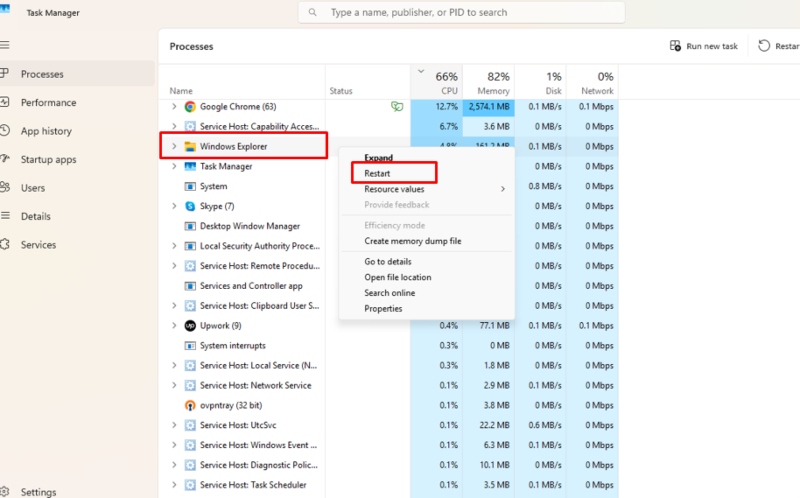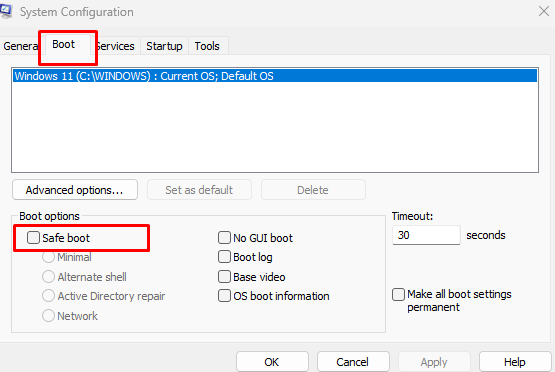How to Fix ” Unable to Rename a File ” Error in Windows 10
Renaming files in Windows 10 is an essential function, but sometimes, users encounter issues where they cannot rename a file. This can be due to permission restrictions, system errors, or malware interference. If you’re facing this issue, don’t worry—we will walk you through the reasons and solutions to fix the problem.
Rename File Error in Windows 10 Reasons
Understanding the cause of the issue can help resolve it more efficiently. Here are some common reasons why Windows 10 prevents you from renaming files:
- Insufficient permissions – The file might require administrative privileges to rename.
- File is in use – Renaming will be blocked if the file is open in another program.
- Corrupted system files – Damaged Windows files can interfere with file management.
- File name conflicts – The new name might already exist in the same directory.
- Malware or system glitches – Certain viruses or software bugs can cause this problem.
- Restricted file attributes – System files or read-only files may not allow renaming.
Now that you know the possible reasons, let’s move on to the fixes.
Solutions to Rename File Error in Windows 10
1. Check and Close Any Open Applications
If a file is in use by another application, Windows will prevent renaming. To fix this:
- Press Ctrl + Shift + Esc to open Task Manager.
- Look for any program using the file in the Processes tab.
- Right-click the application and select End Task.
- Try renaming the file again.
2. Restart Windows Explorer

Windows Explorer might be causing the issue. Restarting it can help:
- Open Task Manager using Ctrl + Shift + Esc.
- Find Windows Explorer in the list.
- Right-click it and select Restart.
- Attempt to rename the file.
3. Run Windows Troubleshooter
Windows has a built-in troubleshooter that can detect and resolve file issues.
- Press Win + I to open Settings.
- Go to Update & Security > Troubleshoot.
- Click on Additional Troubleshooters.
- Select File and Folder Troubleshooter and follow the on-screen instructions.
4. Check File Permissions
If the file is restricted, you need to change the permissions:
- Right-click the file and choose Properties.
- Go to the Security tab and click Edit.
- Select your user account and enable Full Control.
- Click Apply and OK, then try renaming the file.
5. Disable Read-Only Attribute
Some files are set to read-only mode, preventing renaming.
- Right-click the file and select Properties.
- Under the General tab, uncheck Read-only.
- Click Apply and then OK.
6. Use Safe Mode to Rename the File

If the issue persists, try renaming the file in Safe Mode.
- Press Win + R, type msconfig, and hit Enter.
- In the Boot tab, check Safe Boot and click OK.
- Restart your PC and attempt to rename the file.
- Once done, go back to msconfig and turn off Safe boot.
7. Scan for Malware and System Errors
Malware infections and corrupted system files can prevent file renaming. To fix this:
Run a Malware Scan
- Open Windows Security by pressing Win + I > Update & Security > Windows Security.
- Click Virus & Threat Protection> Quick Scan.
- Remove any detected threats and try renaming the file.
Run SFC and DISM Commands
- Press Win + X and select Command Prompt (Admin).
- Type the following command and press Enter: sfc /scannow
- If errors are found, run DISM /Online /Cleanup-Image /RestoreHealth
- Restart your PC and try renaming the file.
8. Fix System Corruption with Fortect

If system file corruption is causing the issue, using a trusted repair tool like Fortect can help. Fortect automatically scans and repairs your system for corrupted files, ensuring smooth file management. It also removes junk files and optimizes system stability, making it an excellent solution for fixing renaming errors.
Download and install Fortect and run a full system scan to resolve file-related issues.
9. Create a New User Profile
Sometimes, profile-related corruption prevents file renaming. Creating a new account can fix this.
- Open Settings (Win + I) to Accounts > Family & other users.
- Click Add someone else to this PC.
- Follow the prompts to create a new account.
- Log in with the new account and try renaming the file.
10. Rename the File Using Command Prompt
If all else fails, use the Command Prompt:
- Press Win + X and select Command Prompt (Admin).
- Navigate to the folder where the file is located:
- cd C:\Users\YourUsername\Documents
- Rename the file with this command:
- ren “oldfilename.txt” “newfilename.txt”
- Press Enter to check if the file has been renamed.
11. Check if Thumbnail is Enabled
Check if Windows prevents the generation of hidden thumbnail files, which were causing conflicts during renaming. If you’re attempting to rename a folder and receive the error message “The action can’t be completed because the folder or a file in it is open in another program,” follow these steps to fix it:

Open File Explorer – Press Win + E. Go to Folder Options – Click View on the top menu, then select Options > Change folder and search options. Disable Thumbnails – In the View tab, check Always show icons, never thumbnails, then click Apply > OK
After making this change, we could rename folders without any issues.
Conclusion
If you can’t rename a file in Windows 10, the problem could be due to file locks, permission restrictions, or system corruption. This guide will help you troubleshoot and fix the issue efficiently. If system corruption is the cause, a tool like Fortect can automatically repair damaged files and optimize your PC.
Try these solutions, and you can rename files without any hassle!




